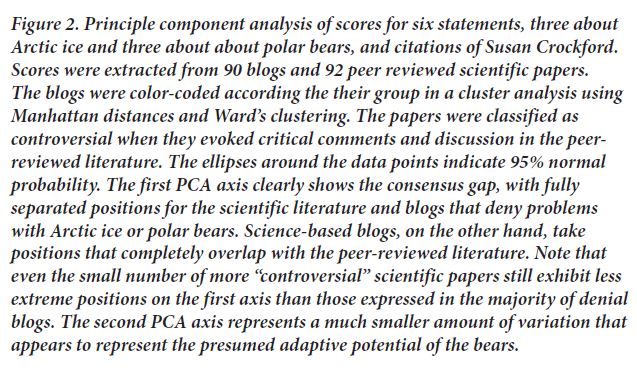Polar Bears, Inadequate data and Statistical Lipstick

A recent paper Internet Blogs, Polar Bears, and Climate-Change Denial by Proxy by JEFFREY A. HARVEY and 13 others has been creating somewhat of a stir in the blogosphere. The paper’s abstract purports to achieve the following:
Increasing surface temperatures, Arctic sea-ice loss, and other evidence of anthropogenic global warming (AGW) are acknowledged by every major scientific organization in the world. However, there is a wide gap between this broad scientific consensus and public opinion. Internet blogs have strongly contributed to this consensus gap by fomenting misunderstandings of AGW causes and consequences. Polar bears (Ursus maritimus) have become a “poster species” for AGW, making them a target of those denying AGW evidence. *Here, focusing on Arctic sea ice and polar bears, we show that blogs that deny or downplay AGW disregard the overwhelming scientific evidence of Arctic sea-ice loss and polar bear vulnerability.* By denying the impacts of AGW on polar bears, bloggers aim to cast doubt on other established ecological consequences of AGW, aggravating the consensus gap. To counter misinformation and reduce this gap, scientists should directly engage the public in the media and blogosphere.
Reading further into the paper we find that this seems to be yet another piece of propaganda to push a Climate Change agenda. In line with the high standards of climate science “communication”, there are over 50 occurences of various forms of the derogatory labels “denier” or “deny” in a mere five pages of text and two pages of references. Such derogatory language has become commonplace in the climate change academic world and reflects badly on the authors who use it.
The paper offers nothing new in terms of scientific research on polar bears or on any other topic, so to justify publication, it includes a superfluous “study” of the views held on the subject within blogs and academic papers. My concern is with the accompanying data and statistical analysis providing the “scientific” veneer for their discussion.
The “lipstick” on the paper’s Figure 2 is perhaps one of the best examples of creating a misleading aura of “real science” that I have encountered in some time.


The closely bunched points massed together in the circled groups create an impression that the data from which it was generated must be based on a set of carefully crafted “measurements” capable of representing in-depth rigorous scientific assessments of a set of papers and blogs. To understand what it actually represents and how it came to be, we start by examining the methodology described in the paper for creating an appropriate data set:



